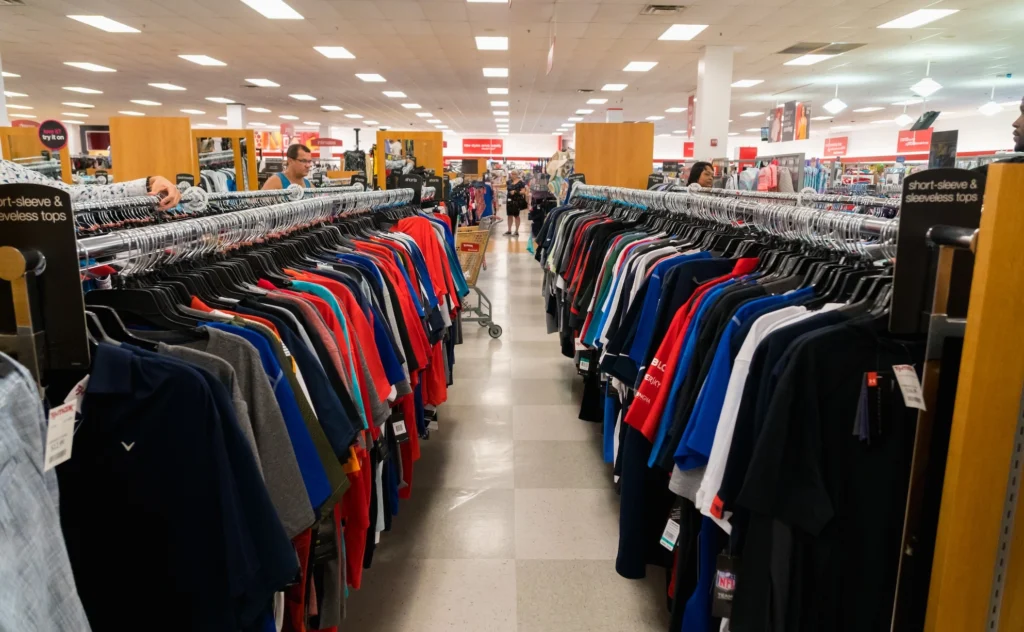The Playbook: Off-Price Retailers Shake Up Fitness & Outdoor Apparel Market

Brands like Sierra, Ross and Burlington are winning budget-conscious shoppers with value-driven style. But price isn’t their only selling point
This story is part of “The Playbook,” a weekly column that takes a deep dive into the future of business, management and technology, with an eye toward practical applications for fitness and wellness executives
There’s no question the ruling brands of fitness and wellness lifestyle apparel are undisputed and include Nike, Lululemon, Alo Yoga, Adidas, Under Armour, Vuori and Gymshark. In the outdoor adventure and sports categories, add Columbia and The North Face. And there’s also the highly respectable private label brands at Dick’s Sporting Goods.
Pre- and post-pandemic, it’s been good to be in the fitness apparel and athleisure segments. As fitness, yoga and Pilates studios continue to grow along with traditional gyms, top of mind for consumers is “what to wear?” And brands are there to meet their needs.
But there’s a corner of the market that is eyeing expansion into this category with increasingly broader offerings of workout clothes, yoga apparel, and more recently, outdoor apparel and equipment. Say hello to the off-price retailers.
Brands such as Ross Stores, TJX Cos. and Burlington Coat Factory, among others, are meeting consumer demand for activewear and workout apparel.
Newer to the market is Sierra, a TJX. Cos. brand offering running shoes, hiking apparel, footwear and fitness apparel, and gear. In its most recent quarterly call with analysts, executive leadership noted that as the weather warmed in March and April, its Sierra nameplate, part of the company’s Marmaxx division, helped to drive sales. As other retailers experienced declining same-store sales, Marmaxx and Sierra delivered a 2 percent gain.
Where Off-Price Retailers Win
From a consumer’s perspective, what’s the appeal?
R.J. Hottovy, head of analytical research at Placer.ai, told Athletech News that off-price retailers such as T.J. Maxx, Ross Dress for Less and Burlington “have been top performers in year-over-year visits throughout 2025, benefiting from both a consumer focus on value and unique opportunities to acquire inventory from recent store closures and tariff-related disruptions.”
Hottovy said the value proposition of off-price retailers for shoppers is that they “combine competitive pricing with a unique ‘treasure hunt’ merchandising strategy, a combination that has resonated with consumers in recent years and helped these brands stand out.”
And it’s that point of differentiation that may protect this segment amid economic turmoil.
“The off-price retail category is insulated from broader economic uncertainty because its value-driven, ‘treasure hunt’ model attracts more budget-conscious consumers, and its agile business model allows it to capitalize on excess inventory from other struggling retailers,” Hottovy said.

David Shiffman, head of consumer retail at Solomon Partners, told ATN that the off-price market is exceptional and has been for decades.
“The off-price model has contributed to the demise of the department store sector, especially the mid-priced tier,” he said. “Off-price will continue to take share as consumers seek to ‘treasure hunt’ bargains of branded goods.”
And Wall Street has taken notice. Shiffman said over the past year, shares of TJX Cos. are up 16 percent while the S&P 500 is up 12 percent. For the most recent quarter ended May 3, he said TJX, Ross Stores and Burlington Stores reported average year-over-year revenue growth of 4.6 percent and average year-over-year EBITDA growth of 5.4 percent, which is ahead of other retailers.
“Originally, off-price retailers sold mostly true close-out goods, the availability of which was unpredictable and this appealed to consumers who enjoyed the ‘treasure hunt’ opportunity,” Shiffman said. “Over the years, off-pricers also formed direct sourcing relationships with many top vendors, so today they reliably have inventory from recognized brands, appealing also to the non-treasure hunt consumer who just wants that brand at what they perceive to be a better value than they would find in a department store.”

Why The Outlook Is Generally Optimistic
Still, despite the segment’s strength, office pricers have to remain vigilant.
“Cancelled orders or goods abandoned at the docks as a result of tariff uncertainty will result in more inventory opportunities for the sector,” Shiffman said. “However, off-price retailers will face the same tariff pressure as other retailers for goods manufactured for them in various regions of the world.”
Jordan Rudow, vice president of the Magic and Offprice trade shows, said one of the biggest challenges in the off-price market is inventory volatility.
“While excess inventory from full-price retailers benefits off-price, it is not guaranteed or consistent,” Rudow said. “During inflation and economic uncertainty, value shopping thrives. Off-price is counter-cyclical: it gains market share when consumers pull back from full-price.”
There is also another dimension to the segment’s appeal.
“Off-price can position itself as a circular economy hero by helping reduce fashion waste by absorbing excess inventory,” Rudow said. “Gen Z shoppers are increasingly drawn to low-impact, smart consumption narratives.”
So, what’s The Playbook move here? Study the competitive landscape and tune into consumer behavior and ask: Where and what are they buying, and why?
For inquiries and tips related to “The Playbook,” please reach out to [email protected]



